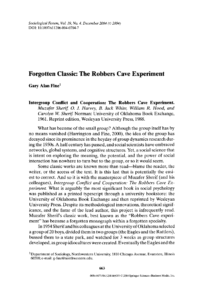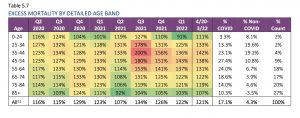The Minimal Group Paradigm, introduced by social psychologist Henri Tajfel in the 1970s, explores the minimal conditions required for individuals to exhibit in-group favoritism and out-group discrimination, even in the absence of substantial reasons for group differentiation. This paradigm aims to understand the psychological mechanisms underlying intergroup biases.
Foundation of the Minimal Group Paradigm:
1. Minimal Categorization: Participants are divided into groups based on trivial distinctions, like preferences for certain artworks, random assignments, or color choices.
2. Task Allocation: Individuals are then engaged in various activities where they distribute rewards or resources between members of their own group (in-group) and members of the other group (out-group).
Key Findings and Observations:
1. In-Group Favoritism: Even in conditions where group assignment is completely arbitrary or inconsequential, participants consistently show a bias towards their in-group. They tend to allocate more resources or rewards to members of their own group.
2. Out-Group Discrimination: Simultaneously, individuals exhibit discrimination against the out-group by favoring their in-group in resource distribution, even if it results in fewer overall resources for the in-group.
Psychological Mechanisms:
1. Social Identity Theory: Tajfel’s theory posits that people categorize themselves into social groups to boost their self-esteem. This categorization leads to in-group favoritism as a way to enhance their social identity and self-worth.
2. Minimal Conditions for Bias: The findings from the Minimal Group Paradigm suggest that even minimal and arbitrary categorization can lead to in-group favoritism and out-group discrimination, highlighting the innate human tendency towards group biases.

Further References
1. Tajfel, H. (1970). Experiments in intergroup discrimination . Scientific American, 223(5), 96-102.
2. Tajfel, H., & Turner, J. C. (1979). An integrative theory of intergroup conflict . The social psychology of intergroup relations, 33(47), 74.
3. Hogg, M. A., & Abrams, D. (1990). Social motivation, self-esteem, and social identity . In M. A. Hogg & D. Abrams (Eds.), Social identity theory: Constructive and critical advances (pp. 28-47). Harvester Wheatsheaf.
The Minimal Group Paradigm provides essential insights into the psychological roots of intergroup biases, emphasizing how even the most minimal distinctions can trigger biases. Understanding these mechanisms is critical in addressing and mitigating intergroup conflicts and biases in various social settings.




![Solom Aschs studies of conformity ed32b30f2de91c72d15e4c0def4e4e8be272e6d71eb017439cf4_640[1]](https://cognitive-liberty.online/wp-content/uploads/ed32b30f2de91c72d15e4c0def4e4e8be272e6d71eb017439cf4_6401-300x268.png)
![Internal vs. external coöptation ec34b70d2ffc1c3e815b410cee45449efe76e7d01db2114692f7c7_640[1]](https://cognitive-liberty.online/wp-content/uploads/ec34b70d2ffc1c3e815b410cee45449efe76e7d01db2114692f7c7_6401-300x211.jpg)


![American psychological association & CIA: Science of Deception Workshop e835b00c2df6013ecd0b4401ef444f94eb6ae3d01db3164094f0c971_640[1]](https://cognitive-liberty.online/wp-content/uploads/e835b00c2df6013ecd0b4401ef444f94eb6ae3d01db3164094f0c971_6401-300x220.jpg)